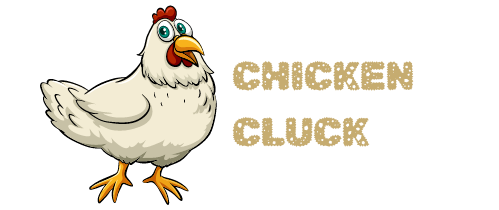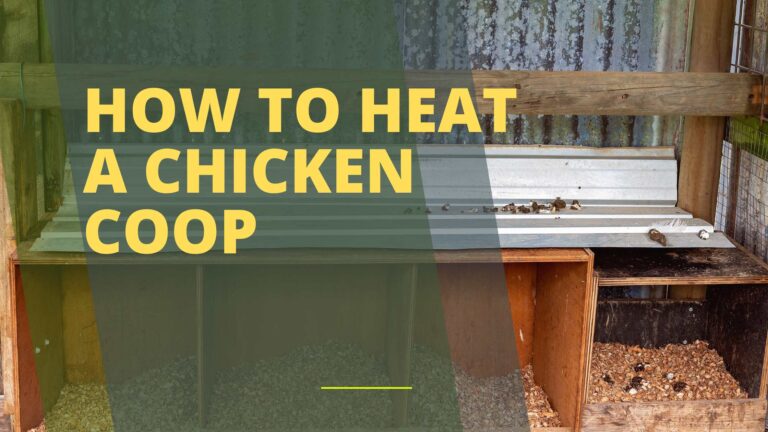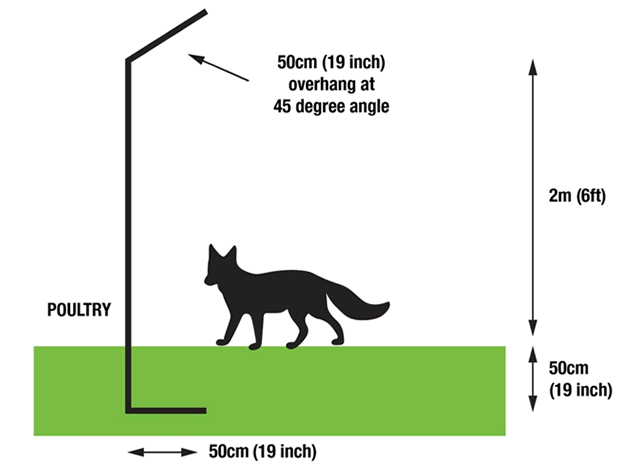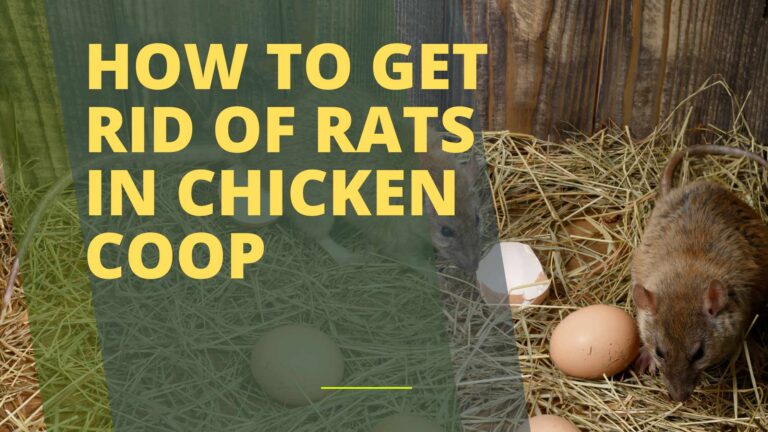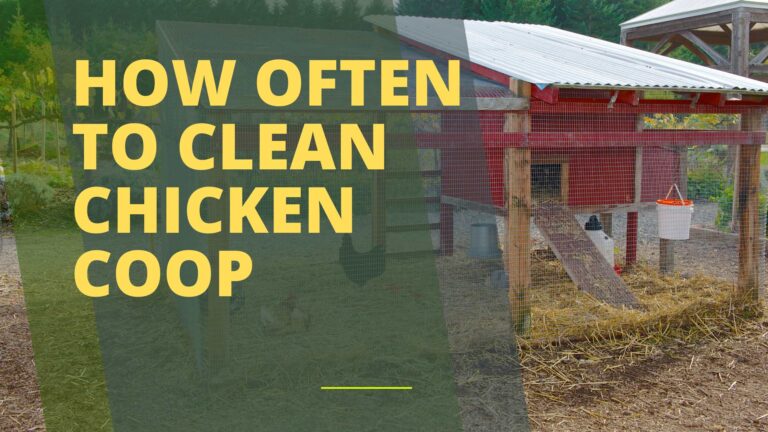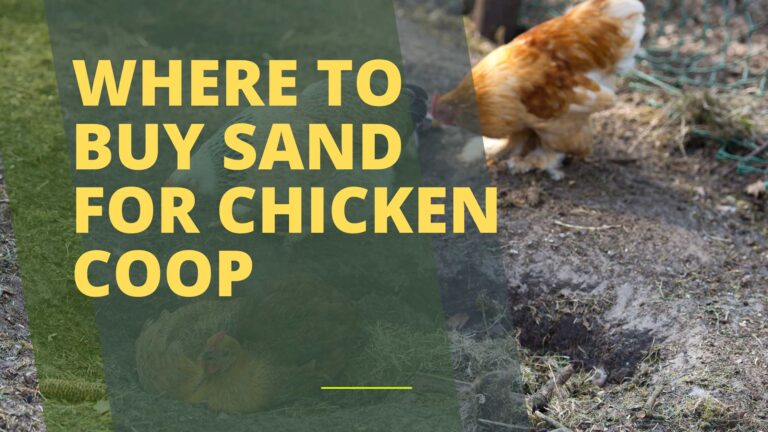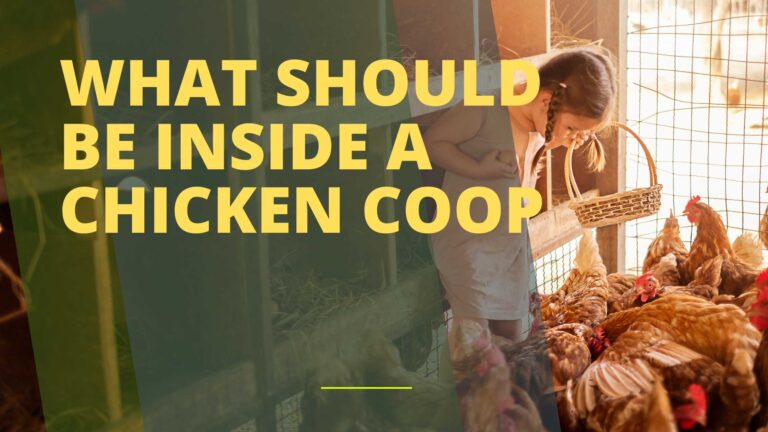To build a chicken coop door, gather materials like wood, screws, and hinges first. Measure the opening before cutting the wood to size.
Constructing a robust chicken coop door is essential for the safety and comfort of your flock. It shields your chickens from predators and ensures they remain where you want them. The process requires basic carpentry tools and skills. Begin with a clear plan: decide on the dimensions, choose durable materials, and consider the door’s functionality.
How to Build a Chicken Coop Door? Whether you’re an experienced handyperson or a DIY novice, building a chicken coop door is an achievable project. With attention to detail and proper guidance, you can create a secure and functional entryway to your chickens’ home. Remember, the door must be sturdy to withstand the elements and any potential threats, ensuring your feathered friends stay safe year-round.
Importance Of A Secure Chicken Coop Door
Chickens need a safe home just like us. A sturdy coop door keeps them safe. It stops unwanted visitors like foxes and raccoons. Happy chickens mean more eggs for us. Let’s make the best door for our feathered friends!
Protection Against Predators
Predators lurk at night, looking for a tasty snack. Your chickens could be on their menu. A strong door acts like a shield. It keeps the chickens in and the hungry animals out. Use tough materials and locks.
- Choose heavy-duty wood or metal.
- Install strong locks and latches.
- Check for gaps and seal them.
Regulating Temperature And Weather
A door also fights the weather. It keeps chickens warm in winter and cool in summer. It stops rain, wind, and snow from entering. Proper ventilation is key. It ensures fresh air while keeping temperatures just right.
| Season | Door Feature | Benefits |
|---|---|---|
| Winter | Insulation | Keeps heat in |
| Summer | Screens | Lets cool air in |

Credit: www.pinterest.com
Choosing The Right Location
chicken coop door Finding the perfect spot for your chicken coop door is vital for your flock’s safety and ease of access. When you pick the right place, your chickens stay happy, and your daily chores become simpler. Let’s dive into important factors to consider for positioning your coop door optimally.
Assessing The Coop Layout
Start by mapping your coop’s internal layout. Think about the path your chickens will take. The door should provide easy entry and exit. Consider the following points:
- Space for feeding and nesting areas
- Room for roosting spots
- Clear walkways to avoid obstructions
Place your door close to feeding zones to streamline your routine. Make sure it doesn’t open into cluttered space.
Sunlight And Wind Direction
Chickens love the morning sun but Guard them from harsh winds. Here are the vital tidbits:
| Factor | Considerations |
|---|---|
| Sunlight | East-facing doors catch morning light |
| Wind | Avoid north-facing doors in cold climates |
By orienting the door eastward, your flock starts the day with sunshine. Shield the entrance from prevailing winds, especially in winter, to keep your birds cozy.
In WordPress, the content within
and
tags will automatically be formatted according to the theme’s styles. Additional classes and styles can be added if needed.
Materials Needed For Construction
Welcome to the essential guide on building a chicken coop door. Knowing the right materials can make the task at hand easier and ensure longevity. Let’s embark on crafting a sturdy entry for your feathery friends.
Wood Vs. Metal Doors
Choosing the right material for your chicken coop door is pivotal. Here we weigh between wood and metal options:
| Wood Doors | Metal Doors |
|---|---|
| Easier to work with for beginners | Offer higher durability |
| Provide a natural look | Resist predators more effectively |
| May warp with moisture | Can be heavier, affecting hinges |
Fasteners And Hinges
Fasteners and hinges play a crucial role in the functionality of the door:
- Screws: Long-lasting hold for wood doors.
- Nails: Easy to use but less secure than screws.
- Bolts and nuts: Ideal for metal doors.
Hinges bear the door’s weight and allow smooth movement.
- Choose heavy-duty hinges for metal doors.
- Rust-resistant coatings increase longevity.
- Ensure hinges match the door weight and size.
Door Design Considerations
Creating the perfect door for a chicken coop is an essential step in ensuring the safety and comfort of your poultry pals. This section of the blog post delves into the vital elements to consider when drafting the design for your coop’s door. A well-planned door can mean the difference between a secure habitat and a potential hazard.
Manual Vs. Automatic Doors
When choosing between a manual or automatic door, consider convenience and security. Manual doors require you to open and close them daily. This can be time-consuming but is cost-effective. On the flip side, automatic doors offer ease. They open and close using timers or light sensors. This ensures your chickens are safe at night or while you’re away. Always ensure the mechanics are reliable and weather-resistant.
Size For Safe Entry And Exit
The size of the coop door is crucial for your chickens’ well-being. A door that is too small can cause injury or stress as chickens squeeze through. Conversely, a door that’s too large may invite predators. The standard rule is a door 12 inches wide by 15 inches tall. This accommodates most chicken breeds. Ensure the door does not drag on the ground. This prevents injuries and keeps the entrance clear from bedding material.
Remember, the coop door is not just for entry and exit. It also helps regulate the temperature inside the coop. Ensure the door seals well to keep out cold drafts during winter time. Proper insulation can keep your feathered friends cozy.
Step-by-step Construction Guide
Welcome to our handy guide on building a chicken coop door. Building a coop door might sound daunting, but with this guide, you’ll have it swinging in no time. Follow these steps to create a secure, robust door for your feathered friends.
Measuring And Cutting
The foundation of a sturdy coop door lies in precise measurement and cutting. Arm yourself with a tape measure, pencil, and saw. Here’s what you need to do:
- Measure the door opening of your coop to determine the door size needed.
- Record the height and width on a piece of paper.
- Select weather-resistant wood for durability.
- Cut the wood according to your measurements, ensuring each piece fits squarely.
Assembling The Frame
With your pieces cut, it’s time to form the door frame. Assembling a solid frame is crucial for the door’s integrity.
- Place the cut pieces on a flat surface.
- Arrange them to form a rectangle that fits the door’s dimensions.
- Use corner clamps to hold the frame together.
- Secure the joints with wood screws or nails.
Attaching The Door To The Coop
Now your door is ready to hang. Attaching the door properly ensures that it will open and close with ease.
| Step | Instructions | Tips |
|---|---|---|
| 1 | Position the door in the opening to make sure it fits. | Leave a slight gap around the door to prevent sticking. |
| 2 | Attach hinges to the door frame. | Choose rust-resistant hinges for longer wear. |
| 3 | Secure the door to the coop with the hinges. | Check the door swings freely. |
| 4 | Add a latch to keep the door closed. | Ensure the latch is easy to operate but secure. |
Adding Safety Features
Building a chicken coop door is not just about accessibility. Safety comes first to protect your feathery friends from predators and harsh weather. Here’s how you can make sure your chickens are safe and cozy.
Locks And Bolts
Secure locks are vital to keep predators out. Explore these options:
- Sliding bolt locks: Easy to use and install on any door type.
- Padlock and hasp: For extra security, add a sturdy padlock.
- Spring latches: Automatically secures the door upon closing.
Place locks high or in complex spots. This makes it tough for curious predators to figure them out.
Sealing Gaps For Insulation
A well-insulated coop keeps chickens warm and prevents drafts. Check these sealing methods:
| Material | Benefits |
|---|---|
| Weather stripping | Blocks cold air and moisture. |
| Foam insulation | Keeps warmth in, pests out. |
| Silicone caulk | Fills smaller crevices around the door frame. |
Remember to inspect and maintain seals regularly, especially before winter sets in.
Automation Of The Chicken Coop Door
An upgrade to your chicken coop that hugely simplifies life is the automation of the chicken coop door. Imagine the coop door opening and closing on its own. It adds security and convenience to your daily routine. This section will look into the wonders of an automatic door.
Benefits Of Automation
- Consistency: The door opens and closes at the same times every day.
- Safety: Chickens are protected from predators at night.
- Convenience: No need to wake up early or rush home to manage the door.
Choosing An Automatic Opener
Selecting the right automatic opener is critical for a seamless experience. Here are factors to consider:
| Factor | Details |
|---|---|
| Power Source | Battery, solar power, or electricity |
| Timer vs. Sensor | Time-based openers or light-sensing for natural rhythms |
| Door Weight | Ensure the opener can handle your door’s weight |
| Weather Resistance | Must withstand your local weather conditions |
Research well, read reviews, and invest in an opener that matches your needs. Your chickens deserve a safe and comfortable home, and you deserve peace of mind.
Maintenance Tips For Longevity
Keeping your chicken coop door in top shape is key for safeguarding your feathered friends. Proper maintenance ensures the door functions smoothly and lasts longer. Here are essential tips to help you maintain your chicken coop door for the years to come.
Regular Cleaning And Inspection
Regular cleaning and inspection are crucial for a chicken coop door. Dust, dirt, and debris can cause issues over time. Follow these steps to keep your door in pristine condition:
- Remove dirt and droppings routinely.
- Check for signs of wear or damage.
- Oil hinges and latches for smooth operation.
- Ensure the door closes securely to keep predators out.
Troubleshooting Common Issues
Over time, you may encounter some issues with your chicken coop door. A smart approach can solve many common problems. Here’s a quick guide:
| Issue | Solution |
|---|---|
| Sticking Door | Apply lubricant to hinges. |
| Noisy Operation | Check for loose parts and tighten them. |
| Door Won’t Close | Adjust the latch for better alignment. |
| Wood Rot | Replace the affected section promptly. |
Address issues immediately to prevent costly repairs. A well-maintained door ensures your chickens stay protected and comfortable.

Credit: theinspiredworkshop.com
Conclusion
Crafting your chicken coop door is a rewarding project. With the right materials and tools, anyone can create a sturdy entrance for their feathered friends. Remember to prioritize safety and functionality. By following these tips, you’ll ensure your coop door stands up to the task, keeping chickens secure and content.
Happy building!
